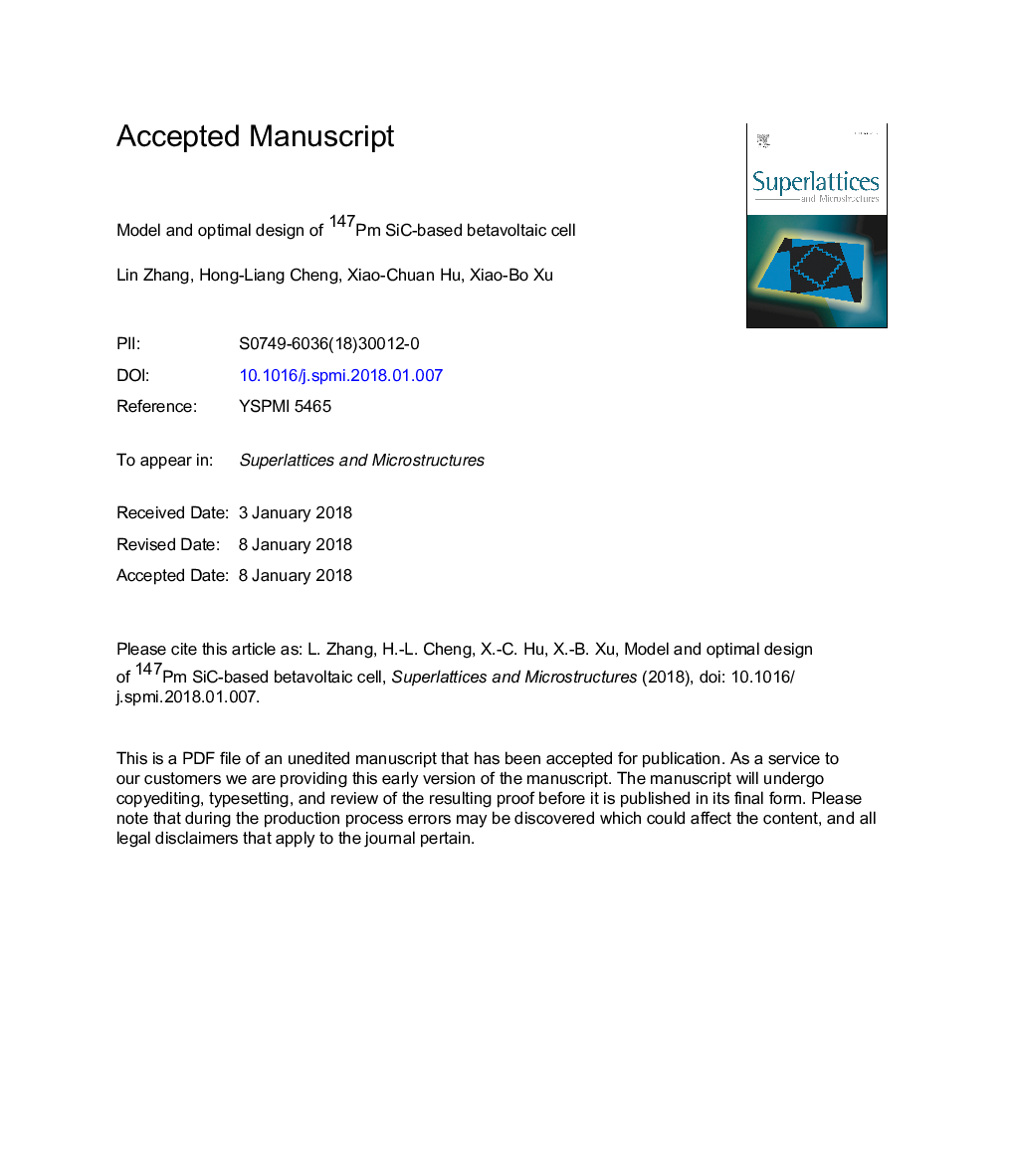| Article ID | Journal | Published Year | Pages | File Type |
|---|---|---|---|---|
| 11008921 | Superlattices and Microstructures | 2018 | 17 Pages |
Abstract
The method of Monte Carlo and numerical model co-simulation is adopted to research the radiation-voltaic effect in semiconductor device and used in the optimal design of 147Pm SiC-based cell in this paper. According to the energy spectrum of 147Pm, the ionization energy deposition in the cell is calculated by Monte Carlo method. The result is converted into the non-equilibrium carrier information and mapped into the device grid generated by the numerical software, so as to simulate output characteristics of the cell. The simulation results based on the SiC PIN betavoltaic cell show the conversion efficiency firstly goes up and then decreases as the I layer thickness increases, and the conversion efficiency decreases when the doping concentration of I layer increases. The conversion efficiency will be 3.74% when the doping concentration and thickness of I layer are 5â¯Ãâ¯1014cmâ3 and 20â¯Î¼m respectively. According to the analysis, the recombination loss of radiation-induced carriers in I layer is the main factor influencing the improvement of conversion efficiency. To improve the conversion efficiency, the “graded N layer” SiC PN cell is proposed in this paper to replace conventional I layer with two N layers with different doping concentrations; the electric field is introduced to reduce the recombination loss of the radiation-induced carriers. The conversion efficiency will be 4.58% when the thickness of two layers are 10â¯Î¼m and the doping concentrations are respectively 5â¯Ãâ¯1014cmâ3 and 1â¯Ãâ¯1016cmâ3.
Keywords
Related Topics
Physical Sciences and Engineering
Materials Science
Electronic, Optical and Magnetic Materials
Authors
Lin Zhang, Hong-Liang Cheng, Xiao-Chuan Hu, Xiao-Bo Xu,
